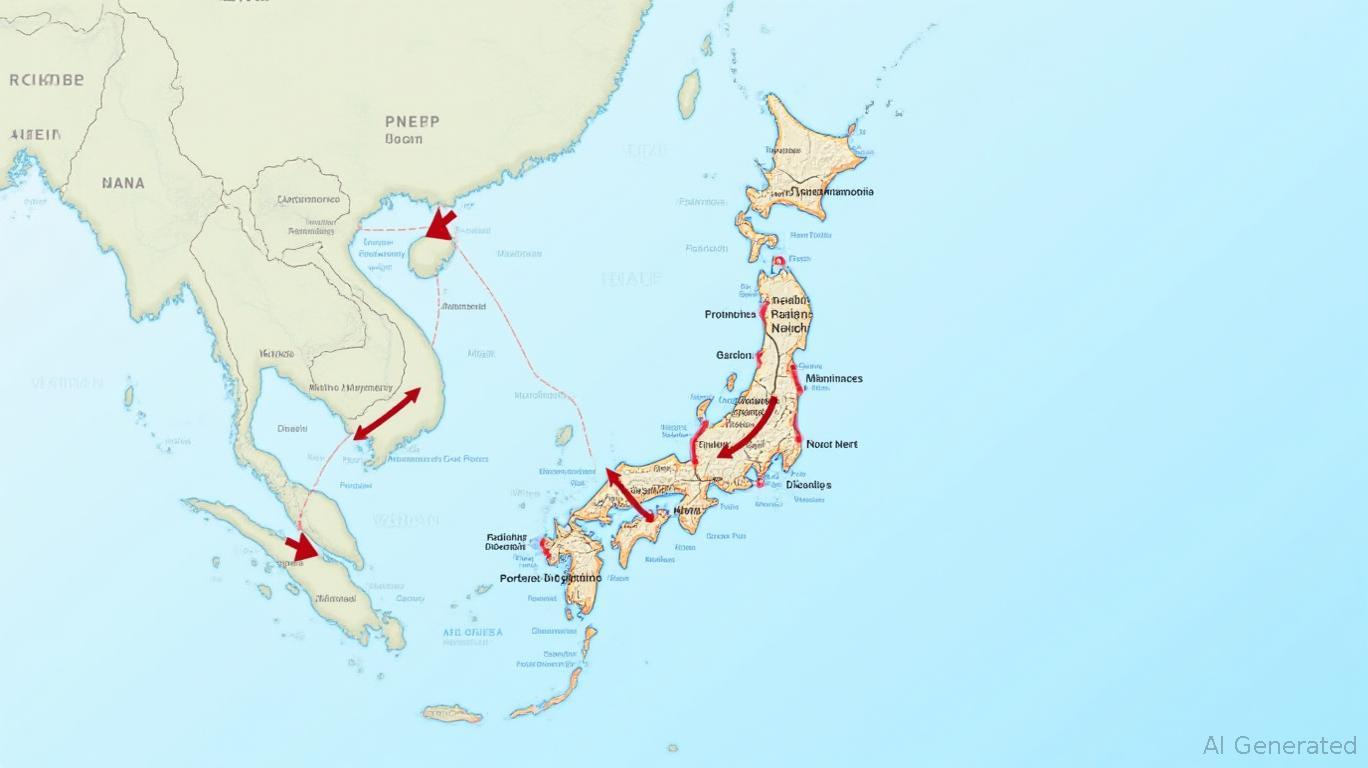Navigating the Crosswinds: US Tariffs and Japan's Economic Outlook
The Bank of Japan’s (BOJ) cautious stance on US tariff policies, articulated by Deputy Governor Kazuo Ueda in early 2025, underscores a critical inflection point for Japan’s economy. With Washington imposing sweeping tariffs—including a 25% levy on automobiles and a minimum 10% rate on all exports—the risks to Japan’s trade-dependent growth model are acute. For investors, this uncertainty demands a granular analysis of sectoral vulnerabilities, inflation dynamics, and the BOJ’s policy options.
The Tariff Shockwave: A Triple Threat to Japan’s Economy

The US tariffs threaten Japan’s economy through three interlinked channels: slowing exports, inflationary pressures, and weakened business confidence. Analysts estimate tariffs could reduce Japan’s GDP by 0.7–1.8% over the next several years, with immediate pain already visible. The Nomura Research Institute warns of a 0.7% GDP contraction within a year, while the Daiwa Institute of Research projects a 1.8% drag by 2029—a timeline extending through President Trump’s hypothetical second term.
The auto sector, which accounts for 28.3% of Japan’s exports to the US, faces the most severe impact. Over 1.3 million vehicles were shipped to the US in 2024, but a 25% tariff could push US car prices up by 12–19%, according to the Budget Lab. Toyota’s stock price—already down 15% since early 2025—reflects investor anxiety about reduced competitiveness.
Inflation’s Tightrope: Wages vs. Corporate Costs
Japan’s fragile wage growth faces a critical test. While nominal wages rose 5.42% in early 2025—the fastest pace in decades—analysts caution that tariff-driven inflation could erode these gains. Input costs for manufacturers, already strained by global raw material prices, are set to rise further. Mitsubishi UFJ Research warns that smaller firms, which employ 70% of Japan’s workforce, may struggle to pass on higher costs without stifling demand.
Inflation itself is a double-edged sword. The BOJ’s 2% target is within reach, but the Bank remains wary of “cost-push” inflation—driven by tariffs and a weaker yen—versus the desired “demand-pull” variety. A recent Tankan survey revealed a decline in business confidence among major manufacturers, with 32% citing trade tensions as a key risk.
Policy Dilemmas: The BOJ’s Tightrope Walk
Ueda’s “wait-and-see” approach reflects the BOJ’s constrained options. With short-term rates at -0.1% and long-term yields capped at 0%, further monetary easing is limited. Yet, the central bank must balance risks: easing could stoke inflation, while tightening risks choking off a fragile recovery. The fiscal response is equally uncertain. Tokyo has demanded tariff removal, but diplomatic channels remain stalled.
Investment Implications: Sectoral Winners and Losers
For investors, the outlook demands a nuanced strategy:
- Avoid Export-Heavy Sectors: Automakers (Toyota, Honda), steel producers, and machinery exporters face near-term headwinds.
- Seek Domestic Plays: Consumer staples, healthcare, and infrastructure firms may benefit from government stimulus aimed at offsetting export declines.
- Monitor the Yen: A weaker yen exacerbates import costs but boosts exporters’ repatriated profits. Investors might hedge via USD/JPY futures.
- Tech and Innovation: Sectors like semiconductors (e.g., Renesas) or green energy (e.g., Panasonic’s battery division) could offer resilience as Japan pivots toward domestic and Asian markets.
Conclusion: A Crossroads for Policymakers and Markets
The US tariff regime has thrust Japan into a precarious equilibrium. With GDP growth at risk of contraction and inflation dynamics shifting, the BOJ’s patience may be tested. Historical precedent suggests that trade wars disproportionately harm export-reliant economies: Japan’s 2019 GDP contraction during earlier US-China tariffs offers a cautionary tale.
Investors should brace for volatility. The Nikkei’s 8-month low in Q1 2025 signals markets are pricing in downside risks, but opportunities exist in sectors insulated from trade shocks. Ultimately, the path forward hinges on whether Japan can diversify its trade relationships, accelerate innovation, and navigate Washington’s protectionism without sacrificing long-term growth. For now, caution—and a close eye on Ueda’s next moves—is warranted.


_442a2dcc1749832873286.jpeg)
_e68fac6d1749831664430.jpeg)






